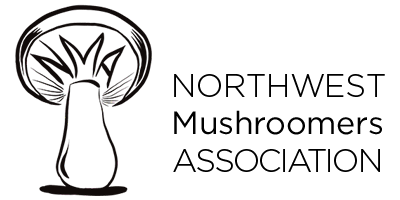Member resources:
- NMA Google Group
- Below are guides to manage your notifications from the group:
Identification resources:
- How to join and use iNaturalist
- MycoMatch – built for Pacific Northwest fungi
- Books and guides – in print and online
- Simple dichotomous key to common larger fungi
- Simple Friesian key to gilled fungi
- Sporeprint colors visual guide
Collecting mushrooms:
- Eating wild mushrooms & tools for the hunt
Spore color is a key characteristic for identifying any mushroom: a small piece of light-weight paper, placed under a mushroom cap in the basket upon collection or at home, is hugely helpful. See our collection guidelines for other hints and tips to getting your mushrooms home safe and sound. Rules and regulations around wild mushroom collection, for noncommercial and commercial uses, varies considerably by location. Here are the Washington State Personal Use Mushroom Harvesting Rules for 2016. If you collect on public land, check with the local agency office or ranger station to ensure these rules are current. If you collect on private land, get permission from the land owner.
Some species are restricted from collecting, to conserve them. These are mostly uncommonly found and rare species. Scroll down to “Species Restrictions” on the PSMS site to learn more. Help protect fungal biodiversity! Visit the Fungal Diversity Survey.
Regional mushroom clubs:
- Puget Sound Mycological Society (PSMS)
- Kitsap Peninsula Mycological Society (KPMS)
- Oregon Mycological Society (OMS)
- Snohomish County Mycological Society (SCMS)
- South Sound Mushroom Club (SSMC)
- S. Vancouver Island Mycological Society (SVIMS)
- Vancouver Mycological Society (VMS)
- Yakima Valley Mushroom Society (YVMS)
Mushroom publications:

